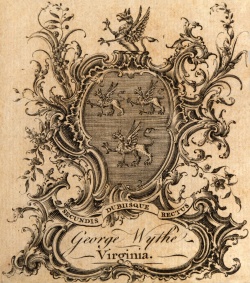Difference between revisions of "Kainē Diathēkē"
Mvanwicklin (talk | contribs) m |
m |
||
| Line 16: | Line 16: | ||
|pages= | |pages= | ||
|desc= | |desc= | ||
| − | }}The | + | }}The second part of the Christian biblical canon, the [[wikipedia: New Testament| New Testament]] consists of several texts originally written in [[wikipedia: Koine Greek| Koine Greek]]. Historians do not know when the first compilation of the New Testament occurred, nor do they know who compiled it.<ref>Bruce M. Metzger "History of Editing the Greek New Testament," ''Proceedings of the American Philosophical Society'' 131, no. 2 (1987): 148.</ref> The [[wikipedia:Complutensian_Polyglot_Bible|Complutensian Polyglot Bible]] edited by [[wikipedia:Francisco_Jiménez_de_Cisneros|Cardinal Francisco Jiménez de Cisneros]] (1436-1517) included the first printed Greek New Testament (1514) but the 1516 edition by [[wikipedia:Erasmus|Desiderius Erasmus]] preceded the delayed publication of the Polyglot Bible by four years.<ref>Ibid, 70.</ref><ref>D. Parker, "[https://www.oxfordreference.com/view/10.1093/acref/9780198601180.001.0001/acref-9780198601180-chapter-6 The New Testament]," in ''The Oxford Illustrated History of the Bible'', accessed March 31, 2023.</ref> Unfortunately, Erasmus used a limited number of relatively recent, incomplete Greek texts and translated back from the Latin [[wikipedia:Vulgate|Vulgate]] when lacking the material he needed. The result has been dubbed "the most inaccurate book ever printed."<ref>Parker, "The New Testament."</ref> It influenced all subsequent versions of the New Testament printed until the nineteenth century.<ref>Charles B. Puskas and C. Michael Robbins, ''An Introduction to the New Testament'' (Cambridge: The Lutterworth Press, 2011): 70.</ref> |
==Evidence for Inclusion in Wythe's Library== | ==Evidence for Inclusion in Wythe's Library== | ||
Revision as of 15:55, 31 March 2023
| He Kaine Diatheke. Novum Testamentum | ||
|
at the College of William & Mary. |
||
| Published | Londini: Excudebat G. Bowyer, Impensis Societatis Stationariorum | |
| Date | 1743 | |
The second part of the Christian biblical canon, the New Testament consists of several texts originally written in Koine Greek. Historians do not know when the first compilation of the New Testament occurred, nor do they know who compiled it.[1] The Complutensian Polyglot Bible edited by Cardinal Francisco Jiménez de Cisneros (1436-1517) included the first printed Greek New Testament (1514) but the 1516 edition by Desiderius Erasmus preceded the delayed publication of the Polyglot Bible by four years.[2][3] Unfortunately, Erasmus used a limited number of relatively recent, incomplete Greek texts and translated back from the Latin Vulgate when lacking the material he needed. The result has been dubbed "the most inaccurate book ever printed."[4] It influenced all subsequent versions of the New Testament printed until the nineteenth century.[5]
Evidence for Inclusion in Wythe's Library
Listed in the Jefferson Inventory of Wythe's Library as "Novum testamentum. Gr. 12mo. Lond. 1743. Bower" This was one of the titles kept by Thomas Jefferson. Jefferson may have sold it the Library of Congress in 1815. Both George Wythe's Library[6] on LibraryThing and the Brown Bibliography[7] list the 1743 edition published in London based on the Jefferson copy at the Library of Congress.[8] While the copy still exists, both George Wythe's Library[9] on LibraryThing and the Brown Bibliography[10] note the copy was rebound for Jefferson with his shelfmark. As such, any possible ties to Wythe would have been removed. As of yet, the Wolf Law Library has been unable to procure a copy of Kainē Diathēkē.
See also
- George Wythe Room
- The Holy Bible, Containing the Old and New Testaments
- Jefferson Inventory
- Tes Kaines Diathekes Apanta = Novum Testamentum
- Tēs Kainēs Diathēkēs Hapanta = Novum Testamentum
- Hē Palaia Diatheke Kata tous Hebdomenkonta = Vetus Testamentum Græcum
- Psaltērion Psalterium
- Wythe's Library
References
- ↑ Bruce M. Metzger "History of Editing the Greek New Testament," Proceedings of the American Philosophical Society 131, no. 2 (1987): 148.
- ↑ Ibid, 70.
- ↑ D. Parker, "The New Testament," in The Oxford Illustrated History of the Bible, accessed March 31, 2023.
- ↑ Parker, "The New Testament."
- ↑ Charles B. Puskas and C. Michael Robbins, An Introduction to the New Testament (Cambridge: The Lutterworth Press, 2011): 70.
- ↑ LibraryThing, s. v. "Member: George Wythe", accessed on February 2, 2015.
- ↑ Bennie Brown, "The Library of George Wythe of Williamsburg and Richmond," (unpublished manuscript, May, 2012) Microsoft Word file. Earlier edition available at: https://digitalarchive.wm.edu/handle/10288/13433
- ↑ E. Millicent Sowerby, Catalogue of the Library of Thomas Jefferson, (Washington, D.C.: The Library of Congress, 1952-1959), 2:99-100 [no.1480].
- ↑ LibraryThing, s. v. "Member: George Wythe", accessed on February 2, 2015.
- ↑ Bennie Brown, "The Library of George Wythe of Williamsburg and Richmond," (unpublished manuscript, May, 2012) Microsoft Word file. Earlier edition available at: https://digitalarchive.wm.edu/handle/10288/13433
